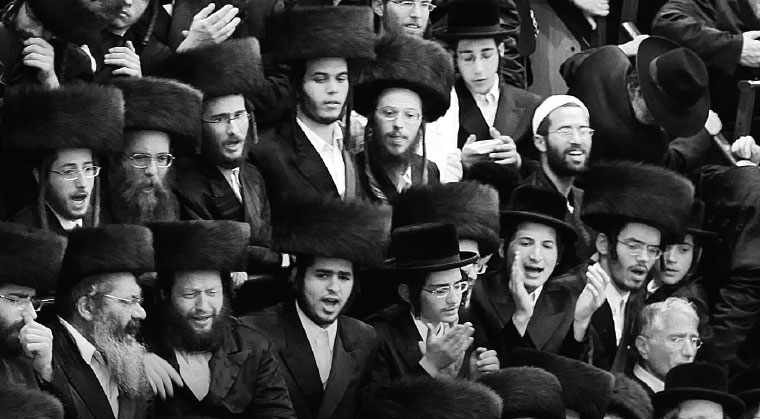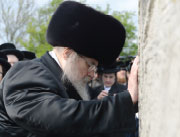Unlikely Chassid


UNIQUE CONNECTION “When my turn came he held my hand and said ‘I know this sounds strange but I think there’s a kesher between our neshamos. When I said I hope you’ll come visit I really meant it’
W e often see them from afar chassidic rebbes in their resplendent silk robes holding court in front of thousands. But we’ve also seen the rebbe sitting close while counseling a young man or holding the hand of a distraught mourner his eyes locked in empathy and pain. For those whose religious life doesn’t revolve around the rebbe’s word there might be something foreign about the seemingly oversized role of this spiritual leader in day-to-day life — yet there’s something in those tender intimate moments that can pull the heartstrings of even the most kalte Litvak.
In the stories that follow we meet non-chassidim who have made unlikely connections with chassidic rebbes and rabbinic leaders. Each came to his special relationship in his own way along his individual life journey yet there is something in common that binds the tales: One may wear a knitted kippah and the other a shtreimel but when two neshamos unite the outer trappings melt away.
Beyond the Standard Line
As executive vice chairman of the Conference of Presidents of Major American Jewish Organizations Malcolm Hoenlein is perhaps the most powerful Jewish lay leader in the United States. How did he forge a connection with the Belzer Rebbe — Rav Yissachar Dov Rokeach shlita of Jerusalem — who leads one of the largest chassidic courts in the world?
About eight years ago I had some involvement with the Belzer bikur cholim organization which resulted in an invitation to meet the Rebbe. I had been introduced to him at a tish many years earlier but this time the minute we met there was an instant bond at least on my part. My Yiddish isn’t that great but I felt the Rebbe heard and understood everything I said. We talked and even laughed together; his understanding and ability to discuss so many different topics in an in-depth way is remarkable.
Since then I’ve gone to the Rebbe often to discuss issues of both public and private nature and with every meeting my appreciation of him grows. The Rebbe is a very special person; he understands the world in a unique way. In addition to his clear perception of the issues facing the chareidi community — not just his own constituents but also the community at large — he has an openness to discussing solutions beyond the standard responses. He is someone who feels a real sense of achrayus for all of Klal Yisrael not just his own chassidim and we connect on that level as well.
When I was planning a visit to President Assad about a month before fighting broke out in Syria in 2011 the Rebbe was one of the two people I consulted before I went. He discussed the visit with me asked why I was going about my agenda and so on. I went to the area secure that I had the Rebbe’s blessing.

“Whenever I call him he’ll always pick up the phone — I know I can ask him anything even though our personal religious affiliations are different”
Baruch Hashem I have very good contacts with a number of rebbes roshei yeshivah and gedolim but the Belzer Rebbe is someone I especially look to for guidance. I admire his openness his willingness to challenge some of the accepted norms. He evaluates things; he won’t just give an automatic response.
A few years ago one of my grandsons was very ill and we asked the Belzer Rebbe as well as Rav Steinman and two other gedolim for a brachah — and all of them said everything would be fine. Then the doctors administered a test that came back with very negative results.
We returned to the Rebbe and said “The Rebbe said it would be fine but we just got the test results and it doesn’t look good.”
“He’ll be fine ” the Rebbe repeated with conviction. (The same response came from the other three gedolim as well.)
Somewhat reassured yet at the same time a bit skeptical I reported this exchange to my children. The doctors were amazed when my grandson walked out of the hospital a few days later — totally fine.
Despite our very different lifestyles my grandchildren jump at the opportunity to meet with the Rebbe who is very warm with them as well. My wife and daughters receive the same treatment from the Rebbetzin. At the Belzer Simchas Beis Hashoeivah the Rebbe gives us brachos in front of everybody even though we certainly don’t look like your typical chassidim. I believe the Rebbe is sending a message to his chassidim: “Here are people who don’t necessarily look like us but we treat them like we do each other. Maybe even better.” (Excerpted from Mishpacha Issue 655)
Oops! We could not locate your form.






